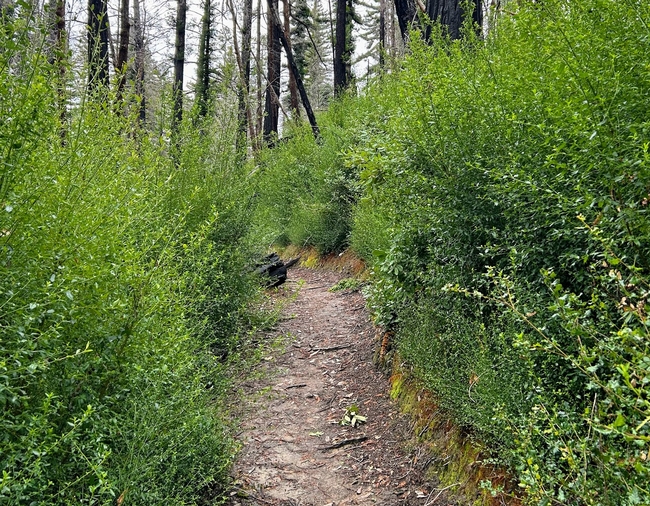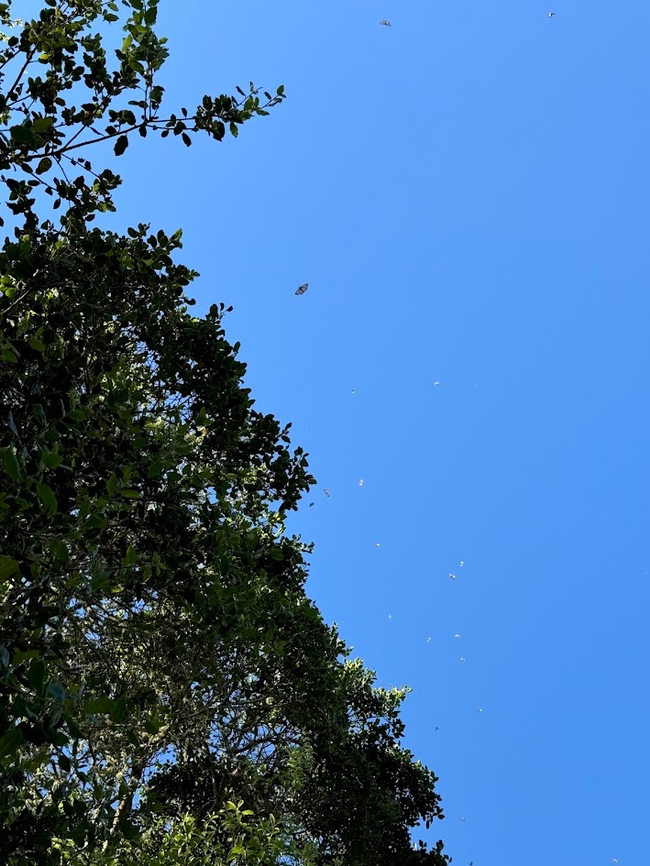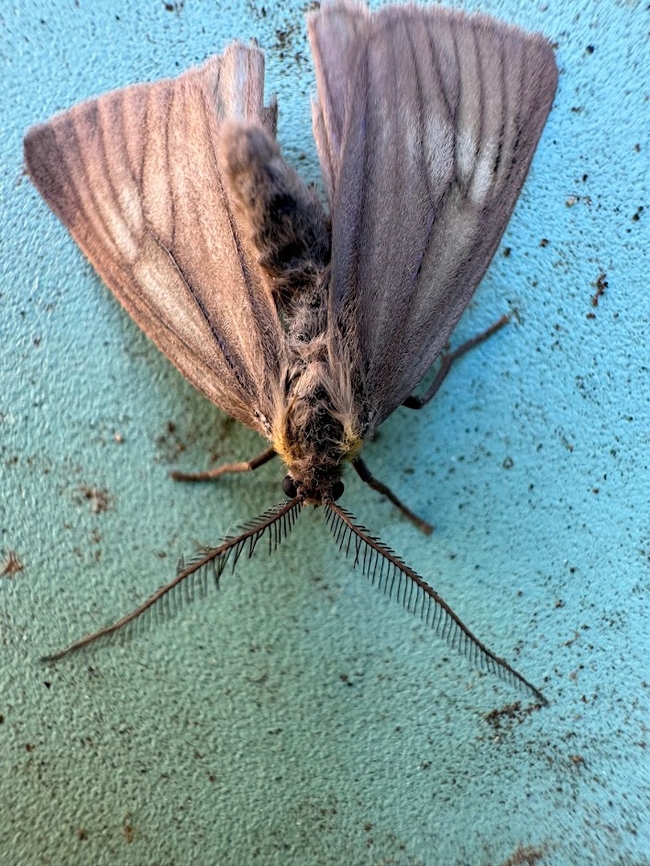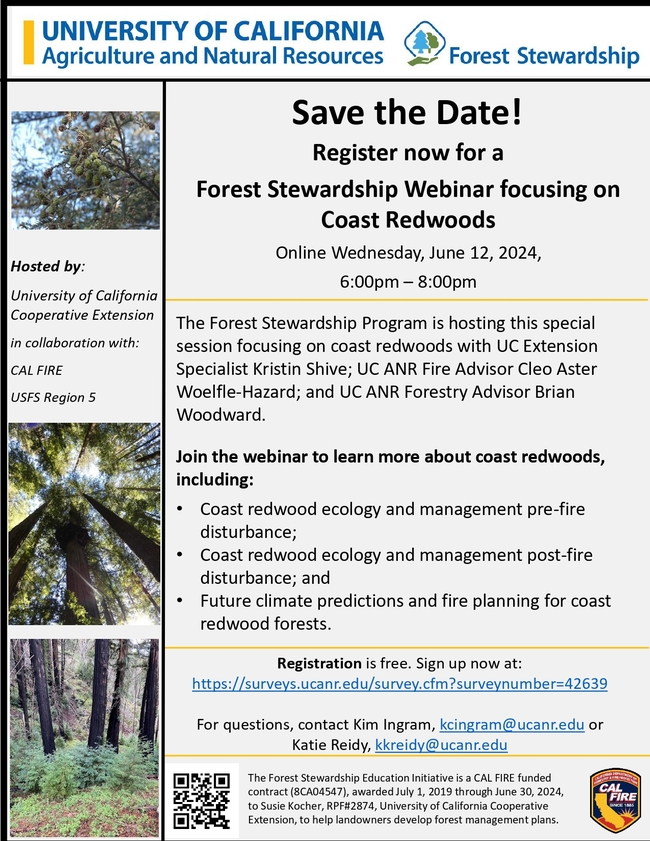- Author: Brian Woodward
Attention all Santa Cruz Mountains Forest Enthusiasts! Our friends over at the UCANR Fire Network, in collaboration with numerous local partners, have put in an incredible amount of work to bring together the first annual CENTRAL COAST GOOD FIRE FAIR. The event will be held at Henry Cowell Redwoods State Park on October 5th, from 10 am to 3pm.
A first of its kind, the event will be a celebration of good fire and an opportunity to learn who, how, where, and why fire is used in management of central coast ecosystems. The event is being held in the main parking lot and (conditions permitting) will include a live fire demonstration! Standard $10 entrance fee applies for drive-ins, walk/bike-ins to the park are free as always.
I will be at the event all day, soaking in the activities and leading a couple of fire ecology focused forest walks on the Henry Cowell Redwoods Loop Trail. So please come say hi, take a hike, and enjoy the multitude of events (suitable for all ages and abilities) that are planned for the day.
Look forward to seeing you there!
- Author: Brian Woodward
Are those moths? What are they doing to my oaks? Why are they out in the daytime? If you live in the Santa Cruz area (or much of the Bay Area) and have coast live oak or other oak species on your property, you have probably been wondering these exact questions.
Bird? Plane? No-- California oak moth. You will likely see oak moths flying at the ends of branches of coast live oak trees for the next month or so in parts of Santa Cruz County.
2024 has brought another "outbreak" of the California oak moth/worm (Phryganidia californica). As a native species, we see explosions of oak moths in and around coast live oak trees every few years. While the adult moths (pictured below) are most visible right now, you may have seen them as caterpillars just a few months ago. The adult moths are now flying about, laying eggs which will again hatch and become caterpillars this year (the moths have two generations per year), and the process of defoliation will continue into the late summer.
In 2022, I watched closely as the oak moth caterpillars devoured leaves of coast live oak throughout the Carmel Valley - leaving behind defoliated trees that could be seen in vast swaths across the hills of the Valley. Luckily, just a few months later, coast live oak, as resilient as they are, were leafing out vibrant green foliage to replace those leaves in the canopy consumed by the caterpillars. And now, in 2024, I have observed the same phenomenon just outside my back door in Aptos.
Oak moths are not typically seen as a threat to healthy oak trees, so no action is generally the recommendation for property owners and land managers. Rather than considering eradication efforts, I would encourage you to allocate those funds to another forest stewardship project and watch closely and enjoy this natural phenomenon unfold -- the green of the fresh leaves in the Fall will be well worth it.
Further Reading
The Essig Museum of Entomology at UC Berkeley has a great website discussing recent outbreaks and displaying the defoliation and recovery of individual oak trees: https://essig.berkeley.edu/research/oakmoth/
KQED did a fascinating piece on oak moths in 2021: https://www.kqed.org/science/1972082/these-silk-swinging-caterpillars-will-ruin-your-picnic
UC IPM has more details on the ecology and managmenet of oak months, discussing when and how managmenet may be necessary in further depth: https://ipm.ucanr.edu/PMG/PESTNOTES/pn7422.html?src=AR16
- Author: Brian Woodward
I'm excited to announce we have a great webinar planned in June covering coast redwood ecology and stewardship both pre- and postfire! Join me and two of my amazing UCANR colleagues Kristen Shive and Cleo Wölfle Hazard.
Sign up free at https://surveys.ucanr.edu/survey.cfm?surveynumber=42639
If you have any specific topics you would like us to cover, please don't hesitate to give me a call (831-348-7305) or e-mail me at bdwoodward@ucanr.edu.
- Author: Brian Woodward
Whether you've been hiking or driving through the CZU Fire burn footprint in the Santa Cruz Mountains, you might have noticed that the understory of the coast redwood (Sequoia sempervirens) forests look quite different from how they did before the fire. Besides the "fuzzy" appearance of coast redwood trees regrowing from their bases, stems, and branches, another notable change is the dense, shrubby understory. But have you ever wondered what that plant might be? In many cases, the plant in question is Ceanothus thyrsiflorus, also known as “blueblossom” or “California Lilac”. Blueblossom Ceanothus is a native woody plant that thrives in postfire and disturbed conditions. It's also a common landscape plant in California.

A native plant that thrives in the postfire and disturbed environments
You may not have noticed much Ceanothus in the understory prior to the fire, because it is relatively short-lived in forest settings, lasting decades rather than centuries. This plant undergoes "pulses" of recruitment, appearing and disappearing with fire events and the subsequent forest recovery. After a disturbance, blueblossom quickly takes root in various California Coast Range environments, including the redwood understory, just as it has after past fires. In the Santa Cruz Mountains, where many areas hadn't experienced a fire in over a century before the CZU Complex, mature blueblossom plants from the last recruitment pulse had died, making them scarce in the modern forest understory. But then, the heat from the fire triggered dormant seeds in the soil to germinate in large numbers, especially after they were dampened by rain. The post-fire conditions, with plenty of light and minimal competition, are ideal for the growth of woody shrubs, and as a result, the dense shrub layer has rapidly grown over your head in many areas.
Coast redwood, hardwood, and ceanothus sprouts make for a green forest understory over three years following the fire
Blueblossom lives up to its name, forming beautiful clusters of blue and white flowers that produce many seeds. Over time, as the coast redwood forest canopy continues to grow, the conditions that spurred this explosion of understory growth will fade, leading to the slow senescence and eventual death of the mature blueblossom. Left behind will be hundreds of thousands of tiny seeds, sitting in the soil seed bank, relatively undisturbed until the area experiences another fire in the future. But what about all the dead plant material that accumulates in the forest understory over time?
Management Implications
In recent discussions with local forest managers, blueblossom has been a recurring topic. Our understanding of how coast redwood forests react to high-severity fires like the CZU Complex is continuing to develop, and many questions remain about managing the postfire environment, including concerns about blueblossom. As a native species, blueblossom plays an important role in the postfire ecology of the Santa Cruz Mountains, but it may also exacerbate wildfire risks. As such, a balanced approach to management will be necessary. Historical ecological data indicate that blueblossom's presence in the understory is temporary. However, observations from the 2009 Lockheed Fire reveal that the death of blueblossom, as the forest canopy thickens, leads to significant accumulations of dead woody materials, forming dense "mats" as successive generations perish.

A tunnel of Ceanothus at Big Basin State Park in the Santa Cruz Mountains
With an increase in observed and projected fire frequency in the region, dense layers of live or dead blueblossom could potentially influence burn severity and fire behavior in the future. As a result, management of blueblossom will be necessary on some sites in the Santa Cruz Mountains, particularly around homes, legacy and old-growth trees, and other important natural and cultural resources. Unfortunately, blueblossom resprouts when cut early in its growth, so early management through mastication is unlikely to be effective. As the plant ages, however, it may become more manageable using mastication, livestock, prescribed fire, chemical, or a combination of these treatment types. While the best approach and timing for such interventions are yet to be fully known, ongoing demonstration projects and postfire treatments offer valuable insights, helping refine the most effective management strategies.
Monitoring Blueblossom and Studying Management Approaches
Through monitoring and experimentation, we can gradually gain a deeper understanding of postfire blueblossom ecology, as well as when, where, and how we should manage blueblossom to build resilience in our forest communities. I plan to work collaboratively with managers throughout the region to better understand optimal timing and methods for blueblossom management, its appropriateness and need, and to evaluate areas that may be the highest priority for treatment. If you are interested in monitoring or managing blueblossom on your property or already are, please reach out to me for a site visit or discussion.
- Author: Brian Woodward
Conditions in the Santa Cruz Mountains have been ripe for pile burning recently. You may have noticed slight hints of smoke in the air as regional forest managers work quickly to burn woody material that has been carefully piled in fuel and forest health projects. Managers working across the region have been closely monitoring weather conditions to ensure that these burns have the least smoke-related impacts possible for nearby residents.
A recent pile burn in the Soquel area of the Santa Cruz Mountains
In general, piles are burned this time of year because conditions are safe for burning, but also because recent conditions facilitated suitable smoke dispersion. With a considerable acceleration of on-the-ground forest health projects occurring throughout the Santa Cruz Mountains, there are thousands of piles that have or will be burned this winter and spring. Pile burning is an effective and lower-cost method to reduce woody fuels.
In some areas, pile burning may be an option for residents seeking to reduce fuels on their property. Just make sure you have the right permits given the location and time of year, knowledge, safety equipment, and have used the appropriate pile construction methods. You can learn more about these requirements through the new UCANR Fire Network Factsheet. The local Central Coast Prescribed Burn Association also occasionally holds Pile Burn Trainings.








